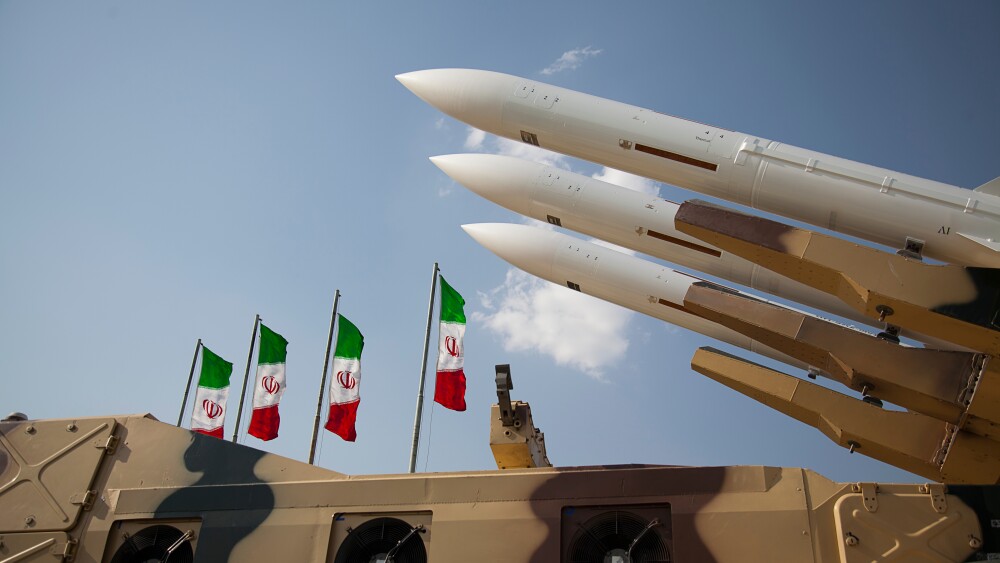Iranian officials reportedly have threatened a far more intense missile assault on Israel if another war breaks out between the two countries. The threat, reported by U.S.-based analyst Ali Vaez of the International Crisis Group in the New York Times, bears the hallmarks of posturing by a defeated power rather than a realistic military capability.
Vaez told the Times that Iranian officials claimed they could launch up to 2,000 ballistic missiles simultaneously to overwhelm Israel’s air defenses. The statement appears part of a psychological campaign rather than a credible operational plan. The International Crisis Group, despite its denials, maintains close contacts with Tehran.
Following the New York Times report, Israel’s Channel 13 quoted a security official as saying that Israel would respond “far more forcefully” in its next confrontation with Iran and was preparing for a conflict that could last longer than twelve days.
[In June 2025] the Israeli air force neutralized Iran’s air defenses and struck missile bases and mobile launchers in at least a dozen locations.
In reality, Iran has never managed to launch more than 200 missiles in a single operation—during two rounds of attacks in 2024—and no more than about seventy during the June 2025 confrontation. The smaller barrages in June were almost certainly the result of Israel’s air superiority during the twelve-day conflict, not of Iranian restraint. In the opening hours, the Israeli air force neutralized Iran’s air defenses and struck missile bases and mobile launchers in at least a dozen locations across the country, making it highly risky for Tehran to deploy or fuel its missiles in the open.
Over the past two decades, the Islamic Republic has built an extensive network of underground tunnels to shield its missile arsenal from airstrikes. However, it still lacks proven silo-launch capabilities, unlike advanced military powers such as the United States. Its missiles and mobile launchers must be brought out of protective facilities and undergo a lengthy sequence of preparations. Under conditions of Israeli air dominance, this creates a major vulnerability—especially for Iran’s liquid-fueled missiles.
Preparing a liquid-propellant ballistic missile for launch is far slower, more complex, and more hazardous than readying a solid-fueled system. Depending on the type of propellant, launcher, and crew proficiency, the process can take from tens of minutes to many hours—and in some cases, a day or more. During such a window, Israeli radar and aerial surveillance can detect fueling operations and carry out pre-emptive strikes. Iran’s only real advantage is its vast territory, which may allow a few launchers to prepare undetected. This explains why it was unable to mount a large-scale barrage in June 2025.
The Israeli strikes that targeted Iran’s command-and-control systems at the start of the June campaign likely added to the confusion, further limiting Iran’s missile response. The same tactic could be used in any future confrontation. Strategically and tactically, Israel holds the initiative—it can decide when and under what conditions to strike.
Air defense systems rely on an integrated radar network and precise electronic coordination—something difficult to maintain over Iran’s vast and varied terrain.
Iran faces formidable obstacles in rebuilding a credible air defense network, something it has failed to achieve in more than three decades since the war with Iraq. There are no indications of major new procurements from Russia or China. Even if such acquisitions occur, hardware alone cannot neutralize Israel’s air power. Air defense systems rely on an integrated radar network and precise electronic coordination—something difficult to maintain over Iran’s vast and varied terrain. Russia’s struggle to protect its own territory from Ukrainian drones and missiles underscores this limitation. Its air defenses have proved inadequate even around Moscow. By comparison, Israel’s multi-layered, technologically advanced missile defense network—protecting a country seventy-five times smaller than Iran—still cannot provide complete coverage.
Claims by unnamed Iranian officials, repeated by analysts with connections to Tehran and circulated by Western media, do not amount to credible deterrence. For decades, the Islamic Republic has relied on its missile arsenal as virtually its only military lever, using it to project an image of power and to threaten distant targets, including Europe. But in three rounds of attacks against Israel in 2024 and 2025, the limits of that deterrent became clear. Beyond depleting some Israeli and U.S. interceptor stockpiles, Iran’s missile campaign achieved little and exposed the fragility behind its boasts.







